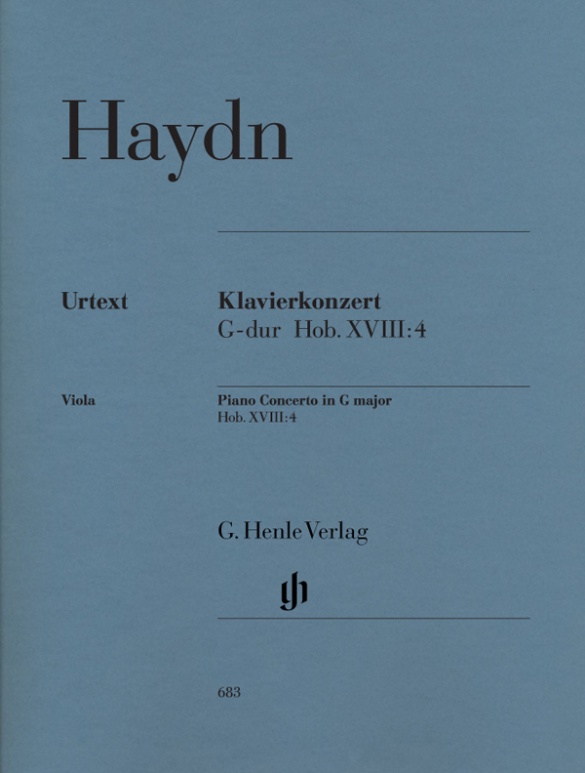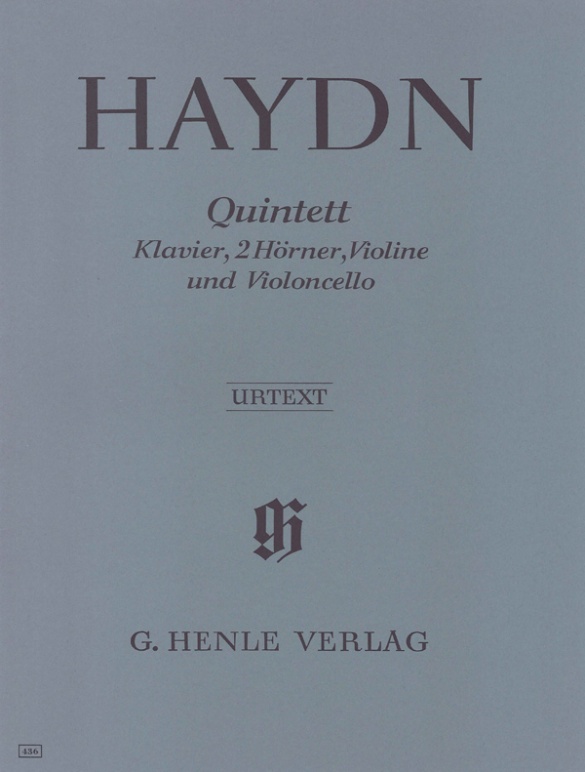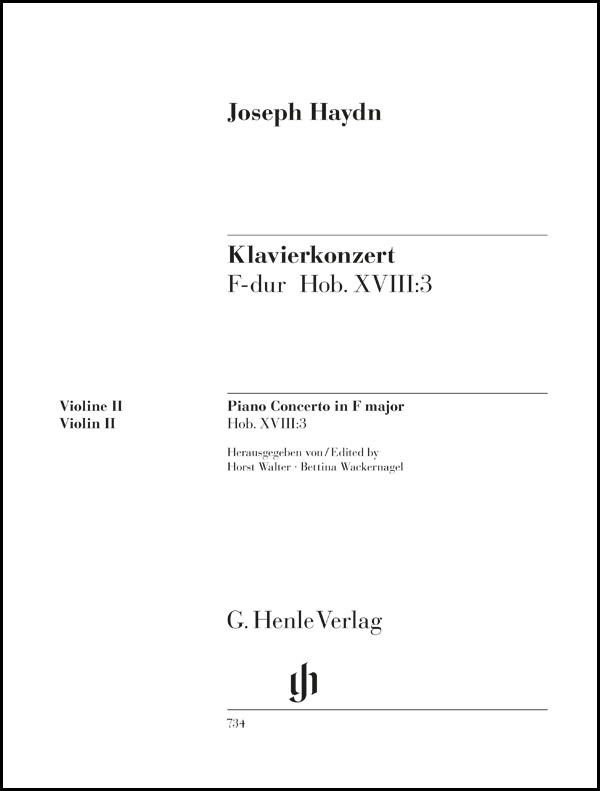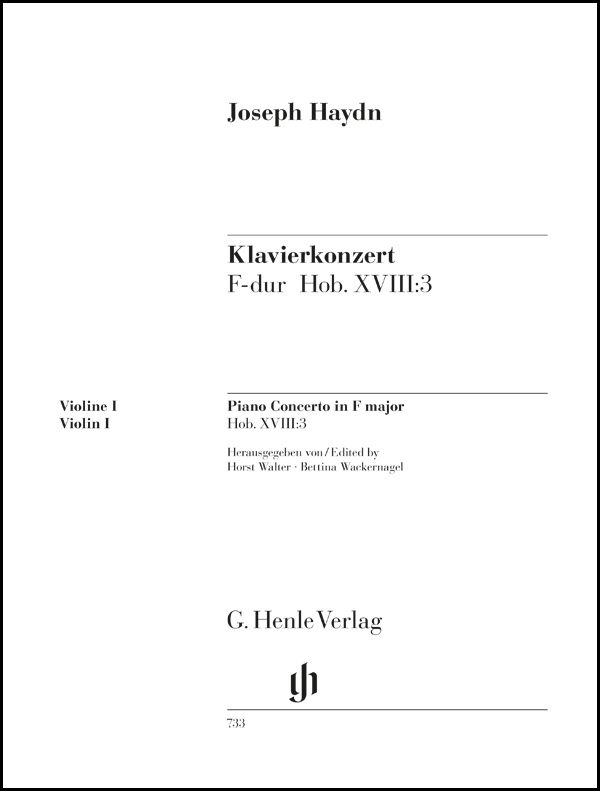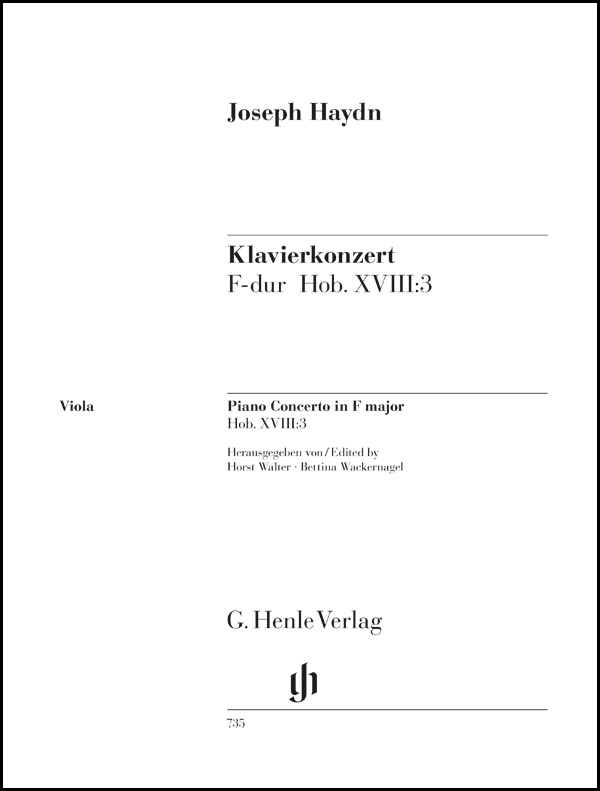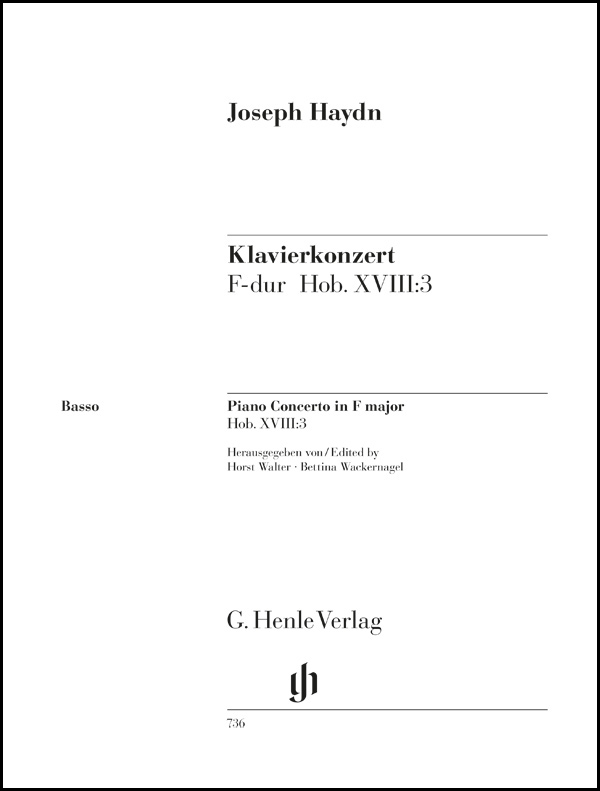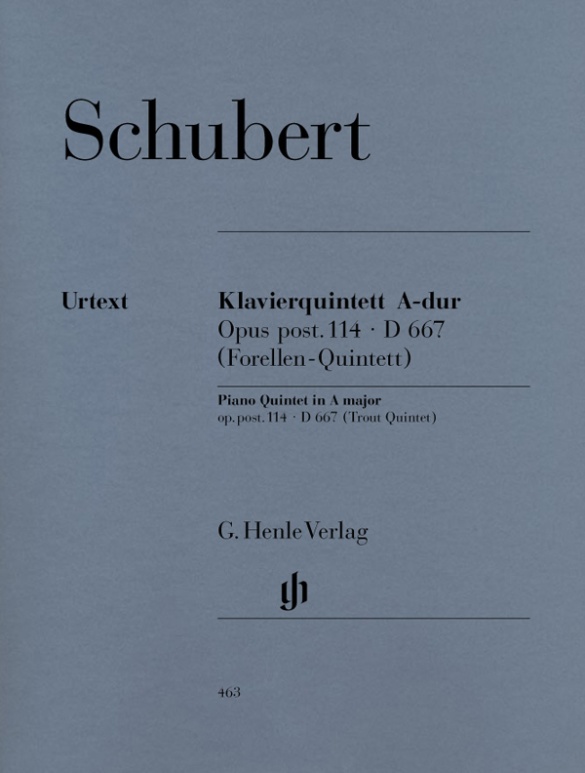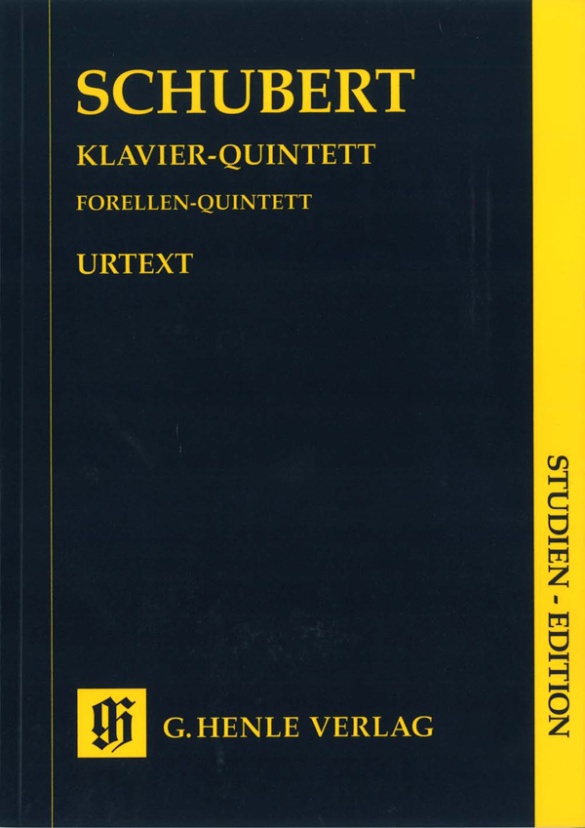Joseph Haydn
Piano Concerto (Harpsichord) G major Hob. XVIII:4
In contrast to Mozart, Haydn was not a keyboard virtuoso. He certainly conducted his orchestral works from the harpsichord, and also performed his own piano sonatas, but any ambition to be a concertizing pianist was foreign to his nature. Thus “only” three piano concertos by Haydn have come down to us. The Concerto for piano and string orchestra Hob. XVIII:4 is full of spirit and the joy of playing. We know neither the occasion for which it was written, nor the year of its composition; the extensive preface to our edition of the playing score, with one string part each, discusses this in detail. As in the sources of the time, the solo part here also includes the bass line (with figures) for tutti sections. Axel Ruoff makes suggestions for the solo cadenzas required in movements 1 and 2; Haydn composed the cadenza for the concluding Rondo movement. This Urtext edition is based on the musical text of the Haydn Complete Edition, which is likewise published by G. Henle Publishers. The trade press applauds it: “In view of the scarcity of easier piano concertos, one can be thankful for this new edition, especially since it can be presented with a very small orchestra, perhaps even with a string quartet.”
Content/Details
About the Composer
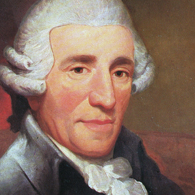
Joseph Haydn
His immense oeuvre documents the profound changes in music history during the second half of the eighteenth century, leading to the emancipation of instrumental music. His most important genres are the symphony and the string quartet, where he cultivated the technique of motivic-thematic development; he made significant contributions to the instrumental concerto and to piano music; during the last years of his life, he composed his great oratorios. Opera and art song take on a rather subordinate significance.
| 1732 | Born in Rohrau, probably on March 31 (baptized on April 1). |
| 1737 or 1738 | His uncle Johann Mathias Franck takes him in, in order to oversee his musical education. |
| around 1739/40 | For about 8–10 years, chorister at St. Stephen’s Cathedral in Vienna. |
| from 1750 | He makes his living as a musician, teacher, and composer. |
| 1757–61 | Employed as music director by Count Morzin. He makes a name for himself as a composer: fifteen symphonies, piano sonatas, trios, divertimenti, string trios, wind partitas, string quartets Opp. 1 and 2. |
| 1761 | “Times of Day” Symphonies Nos. 6–8: “Le matin,” “Le midi,” “Le soir.” |
| from 1761 | Employed by Prince Paul Anton at the Esterházy court, by Prince Nikolaus from 1762, by Paul Anton II from 1790–96, then by Nikolaus II, first as vice-Kapellmeister, then as Kapellmeister after 1766. |
| 1764–65 | Symphonies No. 22 in E-flat major, “Philosopher”; No. 30 in C major, “Alleluia”; and No. 31 in D major, “Hornsignal.” |
| 1766 | Prince Nikolaus Esterházy demands operas for the theater in his newly erected castle. Haydn’s operas are written primarily for special occasions, e.g., “La Canterina,” for the Kaiser’s visit in 1766. He composes many baryton pieces for Prince Nikolaus. |
| 1766–74 | Eighteen symphonies, including “La passione” in F minor (1768), “Lamentatione” in D minor (1770), “The Schoolmaster” in E-flat major (1774), “Trauer” (“Mourning”) in E minor (1772): expanded expressive range (six are in minor keys), more counterpoint. |
| 1768 | Premiere of “Lo speziale” on Goldoni’s libretto for the inauguration of the new opera house at Eszterháza. |
| 1770 | Premiere of the dramma giocoso “Le pescatrici.” After a ten-year hiatus, he writes the pioneering string quartets “6 Divertimenti” Op. 9, and Op. 17 (1771). |
| 1771 | Piano Sonata No. 20 in C minor. |
| 1772 | “Farewell Symphony” No. 45 in F-sharp minor, “6 Divertimenti (‘Sun Quartets’),” Op. 20, which are characterized by contrapuntal techniques (some have fugues as final movements). |
| 1775 | Premiere of the opera “L’incontro improvviso.” |
| around 1775–78 | “Missa brevis sancti Joannis de Deo (‘Little Organ Mass’).” |
| 1776 | Prince Nikolaus calls for regular opera performances at Eszterháza. Haydn adjusts works imported from Vienna or Italy to the local taste. He moves from Eisenstadt to Castle Eszterháza, where he resides for ten months a year. Little instrumental music after 1776, often with integrated opera music. |
| 1777 | Premiere of “Il mondo della luna,” after Goldoni. |
| 1779 | Contact with the publisher Artaria, who distributes his compositions over the following decade. |
| 1781 | Premiere of the opera “La fedeltà premiata.” Missa Cellensis, “Mariazellermesse”; String Quartets, Op. 33 (‘Russian Quartets’), which are written “in a quite new and special way” (Haydn) after a rather long break in composing quartets and regarded as paradigmatic for Haydn’s “wit” in the sense of his playful engagement with the instruments. |
| 1782 | Premiere of “Orlando paladino.” He begins selling his compositions abroad as well; he has the Symphonies Nos. 76–78 and 79–81 (1783–84) printed in Paris. |
| 1783 | Cello Concerto in D major (Hob. VIIb: 2). |
| 1784 | Premiere of “Armida”; from this point he composes no more operas for the court. Piano Concerto in D major. |
| 1785–86 | Commission by Count d’Ogny to write six symphonies (the Paris Symphonies, Nos. 82–87) to be performed at the Concert de la Loge Olympique in Paris. |
| 1787–90 | String Quartets, Opp. 50, 54, and 55. After Nikolaus’ death, Prince Paul Anton II dismisses the entire court chapel; Haydn retains his office in name only. |
| 1791 | Composition of the opera “L’anima del filosofo ossia Orfeo ed Eurudice,” which never reaches the stage (posthumous performance in Florence in 1951). |
| 1791–92 | Stay in London, engaged by the concert manager Johann Peter Salomon. “6 Quartetti,” Op. 64; the first volume of his transcriptions of Scottish folk songs appears in 1792. Composition of the first six London Symphonies Nos. 93–98, including the Surprise Symphony No. 94. |
| 1792 | Sinfonia Concertante for violin, cello, oboe, bassoon, and orchestra in B-flat major. |
| 1794–95 | Second stay in London. Six London Symphonies Nos. 99–104, No. 104 has monothematic opening movement, “Military” Symphony No. 100 integrates Janissary music; sonata-rondo as a new form of final movement, e.g., in No. 102. |
| 1794 | Accession to power of Nikolaus II, who calls for a mass to celebrate the princess’s name day every year. Six new masses are written: the “Heiligmesse” in B-flat major and the “Kettledrum Mass” in C major (1796), the “Nelson Mass” in D minor/D major (1798), the “Theresienmesse” in B-flat major (1799), the “Creation Mass” in B-flat major (1801), and the “Wind Band Mass” in B-flat major (1802). |
| 1796 | Vocal setting of the initially instrumental version of “The Seven Last Words of Our Saviour on the Cross;” Trumpet Concerto in E-flat major. |
| 1797 | Emperor’s Hymn “Gott erhalte Franz den Kaiser” (“God Save Emperor Francis”) and the Emperor Quartet in C major, Op. 76 No. 3. |
| 1798 | Premiere of his oratorio “The Creation.” |
| 1801 | Performance of oratorio “The Seasons.” |
| 1809 | Dies in Vienna on May 31. |
About the Authors
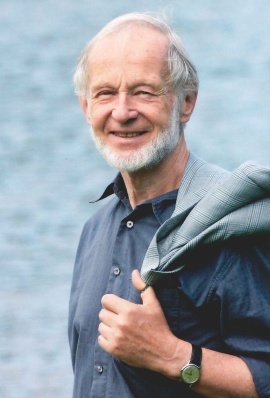
Horst Walter (Editor)
Dr. Horst Walter, born in 1931 in Hannover, studied musicology, German and philosophy at the University of Cologne. In 1962 he completed his doctorate with a thesis on the musical history of Lüneburg and that same year became a research associate at the Joseph Haydn-Institut.
From 1992 until his retirement he was its Head. He made numerous contributions to Haydn research, including articles of a biographical documentary and bibliographic nature. Horst Walter died on 4 April 2016.

Klaus Schilde (Fingering)
Prof. Klaus Schilde, born in 1926, spent his childhood in Dresden. There he was greatly influenced by Walter Engel, who taught him the piano (Kodaly method), composition and violin. From 1946–1948 he studied at the music conservatory in Leipzig with Hugo Steurer. After moving to the west in 1952 he studied with Walter Gieseking and Edwin Fischer, as well as with Marguerite Long, Lucette Descaves and Nadia Boulanger in Paris.
Schilde won numerous prizes. From 1947 onwards he gave concerts as a soloist and chamber musician on almost every single continent with renowned orchestras. He taught at the music conservatories in East Berlin Detmold, West Berlin, Munich, Tokyo (Geidai) and Weimar. From 1988–1991 he was President of the Staatliche Hochschule für Musik und Theater in Munich, where he also taught for decades as a professor. There are numerous radio and television broadcasts with Klaus Schilde as well as CD recordings. Schilde has contributed fingerings to almost 100 Henle Urtext editions.
Prof. Klaus Schilde passed away on 10 December, 2020.
Product Safety Informations (GPSR)

G. Henle Verlag
Here you can find the information about the manufacturer of the product.G. Henle Verlag e.K.
Forstenrieder Allee 122
81476 München
Germany
info@henle.de
www.henle.com
Als u altijd al eens zelf een pianoconcert hebt willen spelen, waarbij u ook nog zelf kunt dirigeren, dan geeft Henle met de uitgave van Haydn's tweede pianoconcert in G. Hoboken XVIII:4, u alle kans. Dit concert kann namelijk zowel met strijkorkest als in kamermuziekbezetting worden gespeeld. ... De uitgave is prachtig en zeer overzichtelijk. De strijkerspartijen zijn apart bijgevoegd en staan eveneens allemaal in de pianopartij afgedrukt. Het uitgebreide voorwoord vermeldt o.a. dat de versie met strijkers oorspronkelijk is, in tegenstelling tot de door latere uitgaven toegevoegde blazers.
Pianowereld, 2001Die vorliegende Ausgabe folgt der "bereinigten" Fassung der Gesamtausgabe und darf wohl als weitgehend authentisch angesehen werden. ... Das Werk ist ein echter, temperamentvoller und spielfreudiger Haydn. ... Beim Mangel an leichteren Klavierkonzerten darf man für diese Neuerscheinung dankbar sein, zumal sie auch mit einem sehr kleinen Orchester, vielleicht sogar einem Streichquartett präsentiert werden kann.
Schweizer Musikzeitung, 2001La presente edizione ripropone l'Urtext del secondo concerto per pianoforte composto da Joseph Haydn. ... Il curatore ha fatto riferimento alla versione pubblicata nel 1983 (sempre per le edizioni Henle) dal Joseph Haydn-Institut, ... Una pregevole edizione, dunque, che comprende anche le parti staccate degli archi in funzione di una possibile esecuzione solistica della stesse.
Hortus musicus, 2000Haydns Klavierkonzert D-dur ist das zweite in der Reihe der "Clavierconcerte", um 1770 geschrieben und wahrscheinlich schon für das Klangideal des Pianoforte komponiert. Nach einer Fülle eigenartig verwässerter und mit offensichtlich unechten Zusätzen versehenen Ausgaben legt Henle nun eine auf der Gesamtedition basierende praktische Urtext-Ausgabe vor, die kaum Wünsche übrig lässt. Das Druckbild ist fantastisch, alle Stimmen sind mit fabelhaften Wendestellen ausgestattet.
Piano News, 2000推荐
autogenerated_cross_selling
本书目其他版本


